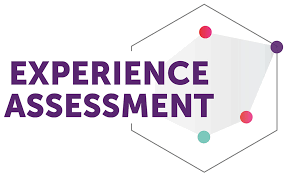science-technology

June 05,2025 • 3 min read
The UX Assessment That Stopped a Customer Exodus

A Business on the Brink
It started with an unexpected drop in user engagement. Bounce rates spiked. Session durations plummeted. A digital product that once thrived suddenly seemed alien to its own audience. This was the harsh reality for a mid-size SaaS company whose user base was vanishing not due to poor marketing or product failure but because of friction hidden deep within its user experience (UX).
The Silent Killer: Poor UX
No alarms rang. No red flags from Google. But user behavior whispered the truth. The problem was not visibility but usability. The product was still being discovered, even ranked well organically, but conversions were tanking. This is where the ux assessment came in not just as a fix, but as a diagnostic revolution.
What Is a UX Assessment, Really?
A UX assessment is a structured evaluation of a digital product’s usability, accessibility, and overall user satisfaction. But it’s more than just a checklist of heuristics. When conducted with semantic precision respecting both macro and micro user contexts a UX assessment becomes a knowledge tool.
It is both auditory and responsive, understanding the "search behaviors" of users not just what they click, but what they expect before the click even happens.
Diagnostic Phase: Data Before Assumptions
ReloadUX initiated a context-aware UX assessment using session replays, heatmaps, and contextual feedback loops. They avoided the trap of generic metrics. Instead, they mapped every friction point to a semantic intent a core concept from topical authority and knowledge base alignment.
For example, a high-exit rate on a sign-up page wasn't labeled as “bad UX” in isolation. The team traced it to a mismatch between the query intent (learn more) and the landing content (push for sign-up). The UX was good technically, but semantically misaligned.
Topical Mapping for UX: The Missing Link
Most audits stop at fixing CTAs and improving button contrast. But ReloadUX went further using a topical map as a strategic tool. They created a map of user expectations vs. UI elements, much like one would map topics and entities in semantic SEO.
This approach aligned each user touchpoint with the central entity (the product) and its attributes (value, clarity, ease-of-use), fulfilling both topical and contextual relevance.
From Assessment to Transformation
Post-assessment, ReloadUX restructured the interface with these guiding principles:
-
Contextual hierarchy: More important information now appeared earlier in the user journey.
-
Micro-semantics: Button text, hover hints, and error messages were rewritten to match mental models.
-
Macro UX flow: Tasks were grouped semantically, not just functionally, improving clarity.
The Results: Reclaiming the Users
Within 45 days, the company saw:
-
A 37% decrease in bounce rate
-
A 60% increase in trial signups
-
Improved customer retention, with qualitative feedback praising “ease of use” and “clarity”
This wasn’t just UX magic it was semantic design in action.
Why UX Assessments Matter More Than Ever
In an era of algorithm updates, ranking volatility, and AI-powered search, UX is no longer optional. It’s part of your topical authority. If your content answers queries but your UX fails to convert, your historical data will reflect disengagement and your rankings will eventually follow.
Frequently Asked Questions
1. What’s the difference between a UX audit and a UX assessment?
A UX audit is often heuristic-based and checklist-driven. A UX assessment, especially one aligned with semantic UX, is broader including contextual behavior analysis, task mapping, and semantic coherence.
2. How does a UX assessment affect SEO?
UX affects dwell time, bounce rate, and conversion all components of historical data, which influence your semantic authority and ranking longevity.
Ali Danish Details
User Profile
- Full name
- Ali Danish
- Email address
- ali.danish@corp.tkxel.com
- Join Date
- 2025-05-14
- State
- City
- Pincode
- Address
- Follow us on Facebook
- Follow us on Twitter
- Website Name
- Bio